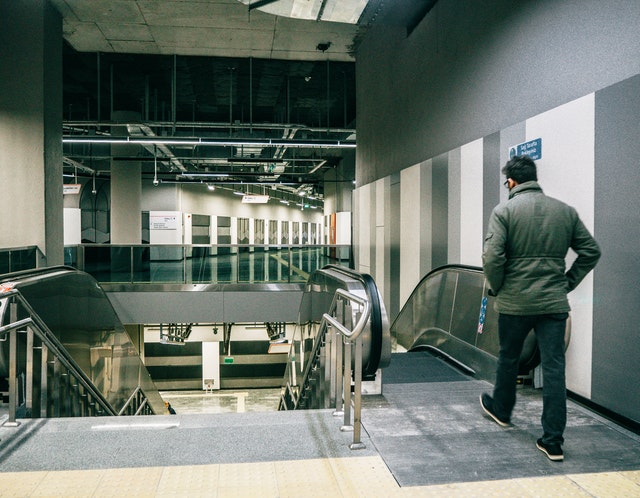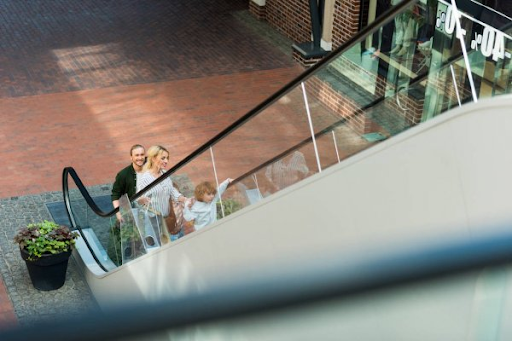From bruises and bumps to amputations and death, statistics show escalators in Canada are becoming increasingly dangerous. In the past six years, 1,225 people have been injured where 69 victims were permanently wounded. In the same year, six people were killed. In addition, the data showed that the number of incidents increased between 2011 and 2016, rising at an average rate of 14% annually. Major injuries have been rising by 8%.
Thousands of commercial and residential escalators are still safe. Major injuries and deaths connected with their use are relatively rare. Many mishaps are related to leveling issues. It refers to the instance when an escalator fails to stop flush with the floor despite the implemented stipulations that they should feature “stopping accuracy.”
Escalator Accidents in Canada
One of the most typical causes of escalator accidents happens when the machine or the areas used to exit or enter them become slippery. Most public spaces don’t have any implemented policies about the use of carpets or warning signs during extreme weather conditions, relying on individuals to look out for any threats. However, many people focus more on their children, advertisements or mobile phones, or where they’re headed to check if the area is slippery.
Escalators making an emergency stop is another common cause of accidents, jerking people off balance. It’s hazardous when the escalator is crowded during rush hours at the tube or train station. Though rare, people can still get injured when one item gets caught in the escalator’s parts, resulting in an emergency stop.
Common Causes of Escalator Accidents in Ontario
Elevator and escalator accidents aren’t as rare, you may think, especially at rush hours or the busy hours of the day. While most accidents result from individuals impatiently pushing past others or carrying too much luggage, you can get injured due to hazards around the area or mechanical failure. Let’s take a look at the most typical causes of an elevator accident in Toronto:
Inadequate Inspections and Maintenance
Not inspecting the escalator is the most common cause of a Toronto elevator accident. Due to heavy traffic, escalators are subjected to regular, daily thorough inspections. Maintaining them is also crucial. If establishments don’t inspect their escalators regularly or ignore them, minor problems that get ignored can lead to significant accidents.
Broken or Missing Escalator Steps
Escalator steps should be durable enough to withstand heavy traffic. But no matter how stable the stairs are, they can still get damaged over time and even malfunction. Maintenance personnel should inspect the steps regularly for wear and tear. Then, replace or repair the broken or damaged areas. Overlooking these problems can make things worse, causing an escalator accident.
Problems with the Escalator Handrail
Handrails offer crucial support while riding on an escalator. Inadequate maintenance can cause the fence to come to a sudden stop or slow down even while the escalator steps keep on moving. It can catch the rider off guard, causing them to lose control and fall. It leads to severe injuries.
Comb Plate Issues
Comb plates refer to the grates at the exit and entrance points of an escalator. These can come loose over time or have missing teeth or protruding screws. Your clothing items or shoelaces can get caught in a damaged comb plate, trapping and injuring you.
Inadequate Training for Maintenance Personnel
Without proper training, minor defects may go undetected, leading to catastrophic consequences. If the establishment doesn’t train their personnel and someone gets injured, they can get sued for compensation for the escalator accident.
Mechanical or Electrical Faults
Escalators use complex heavy machinery underneath the walking surface. Faulty wiring and other electrical problems can lead to escalator failure, resulting in it starting or stopping suddenly. It throws people off control and balance. Falling down the escalator or slipping on a sharp edge of the metal steps can lead to severe injuries, ranging from broken bones and fractures to severe lacerations.
Design Defects
Escalators can have defective designs. It can be due to wrongful execution of the plan or an error in the building itself. One of the more typical design defects is unbalanced leveling that causes tripping hazards. Huge gaps between the sides and steps of the escalator is another common design defect that can catch trouser legs or shoelaces, trapping you.
Overcrowding on the Escalator
You can find visible notices at the entrance points warning you about the dangers of overcrowding. However, when riders are in a hurry, they might not check the warning signs and ride on the escalator despite it being crowded. Other riders add to the danger by trying to push past others or carrying excessive luggage. Doing this can cause overcrowding, causing the escalator to stop suddenly. It can result in a significant disaster because most riders will lose their balance and get trapped or fall.
Wet or Slippery Steps
Establishments should put warning signs at the entrance points to inform the public if the area is slippery and wet. It should be placed when it’s snowing or raining. Most people use the escalators, but they don’t bother looking out for dangers unless they see a sign. Other escalator accidents result from not using signages to warn people about slippery and wet steps, making slips and falls another common problem you can encounter.
Injuries Sustained in Escalator Accidents
Injuries caused by escalator accidents depend on different factors, but one of the most important is the kind of accident. Here are some of the life-altering injuries:
- Electrocution
- Paralysis
- Brain and head injuries
- Neck, spinal cord, and back injuries
- Broken bones and fractures
- Degloving a limb
- Long-term disabilities resulting from crushed limbs
- Lacerations
- Contusions
- Serious sprains and strains
Escalator Accidents Statistics |
|
|
Deaths |
Escalators kill about 30 people per year on average. Nearly half of these casualties are from working on escalators, and the other half are passengers. One of the common causes of death is due to people falling into the escalator. In addition to casualties, injuries can also occur. It can be minor or severe. |
|
Falls |
On average, there are about 17,000 escalator injuries per year. It may seem high, but it’s pretty low if you think about the number of times people ride on escalators in a year. Try to compare this to the roughly six million car accidents per year. You’ll soon realize that escalator accidents are rare, but they still occur. |
|
Accidents involving children |
There have been several reports of entrapment – when shoes, feet, or hands get trapped in the escalator. Your kids can still ride escalators, but you have to ensure their safety. You should:
Most importantly, know where the emergency shut-off button is so that you can turn off the escalator if someone gets trapped while riding. |
Have you been in an escalator accident? If so, contact Diamond & Diamond Lawyers to get a FREE case evaluation and get the compensation you deserve for the negligence of the establishment.
“Whenever you’re going to ride an escalator, it is best to check whether the steps are wet to prevent yourself from slipping.”
Pro Tip
Escalator Safety Tips
While malfunctions and design defects are out of your control, there are a few things you can do to avoid getting injured while riding an escalator.
- If possible, face forward and stand in the center of the step. Don’t go near the sides of the steps.
- Hold on to the railings. It can support you if the escalator suddenly stops or if another person pushes past you while rushing.
- Make sure your trousers and shoe laces aren’t trailing behind. It would help if you tied or secured them. Trailing shoelaces can get trapped in the smallest area between the steps, pinning you against the steps or the sides.
- Make it a habit to check where the emergency shut-off buttons are. It can keep you safe during emergencies.















